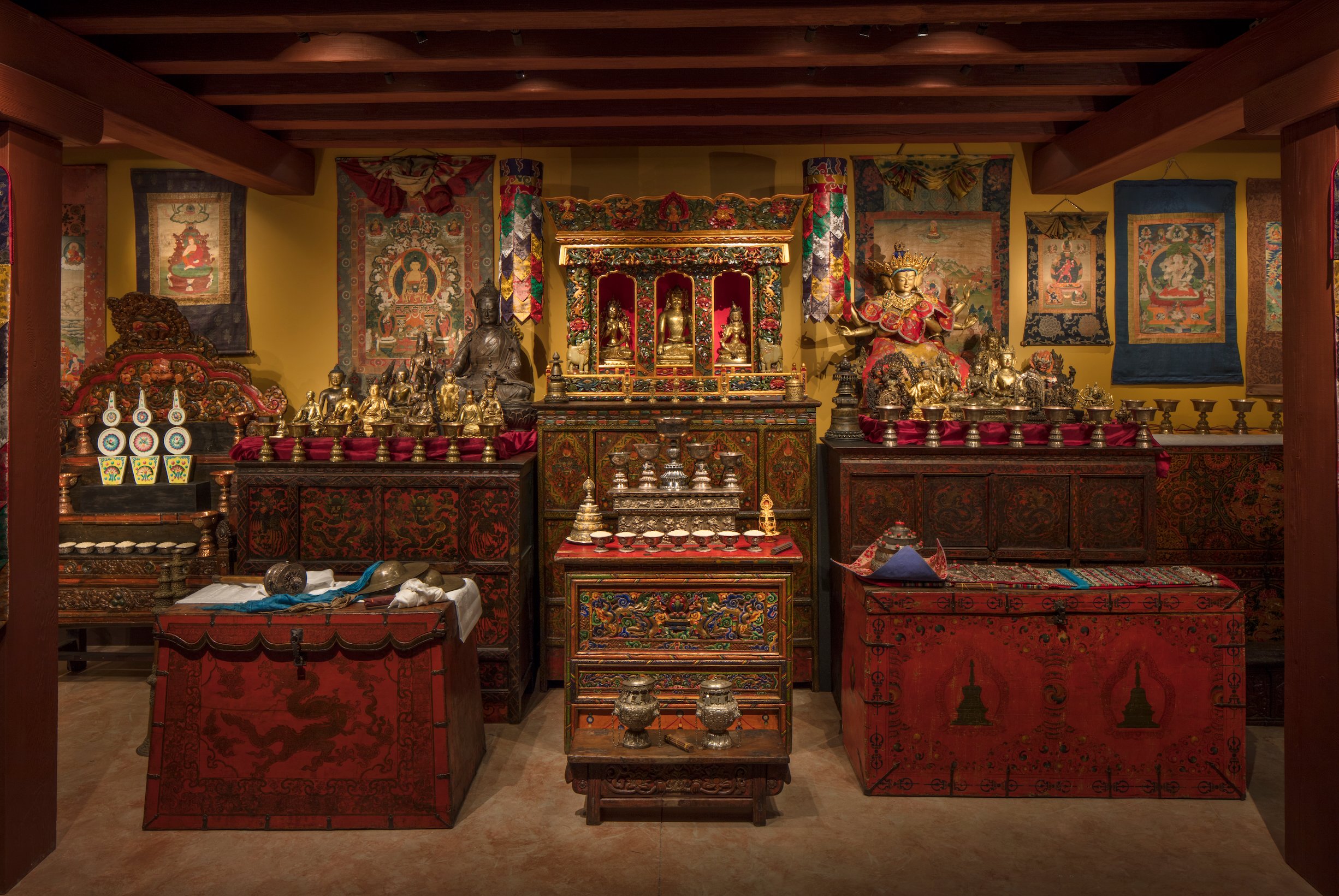
With the impending closure of New York’s Rubin Museum of Art on October 6, the institution has made arrangements for its Tibetan Buddhist Shrine Room, the jewel of the collection, to move to the Brooklyn Museum.
The Rubin, which is dedicated to Himalayan art, announced plans to close its Chelsea flagship back in January. The museum is adopting a decentralized model to become a “museum without walls,” organizing traveling exhibitions and loaning out works from its holdings.
The shrine represents the first such loan, set to go on view at the Brooklyn Museum’s second-floor Arts of Asia galleries for the next six years, starting in June 2025.
“The guiding principle of our borderless future is: more art, accessible to more people, in more places. We are so thrilled that the beating heart of our 17th Street building, the Tibetan Buddhist Shrine Room, will continue to have an exceptional home in New York City at the Brooklyn Museum,” Jorrit Britschgi, the Rubin’s executive director, said in a statement.
An exterior view of the Rubin Museum of Art in New York. Photo by Ben Hide, courtesy of the Rubin Museum of Art, New York.
The installation features an impressive array of over 100 artworks, ritual objects, and furniture pieces from the 14th to 18th centuries. The display reflects how such pieces would be found in a typical household shrine. Adding to the meditative effect are recordings of prayerful chanting from Tibetan monks and nuns, as well as the smell of incense, which is burned during religious rituals.
“From the very start, the Tibetan Buddhist Shrine Room has been the most loved space at the Rubin Museum for providing a glimpse into how Tibetan religious art would be displayed and used as a part of the living cultural tradition and practice,” Elena Pakhoutova, the Rubin’s curator of Himalayan art, added.
At the Rubin, curators would rotate in different works from the collection every two years, allowing the shrine to change to represent the four major Tibetan Buddhist religious traditions: Nyingma, Kagyu, Sakya, and Gelug. (It also served an important conservation purpose by limiting the amount of time light-sensitive paintings spent on view.) The Rubin curators will also continue to regularly rotate the works in the installation at the Brooklyn Museum.
At the Brooklyn Museum, it will help fill a gap in the collection.
“We’ve never been as strong in Buddhist art from the Himalayas as we are in some other regions of Asia,” Joan Cummins, a senior curator for Asian art at the Brooklyn Museum, told the New York Times. “This is an opportunity, in a really dramatic way, to beef up our presentation of a really dynamic and beautiful regional art form.”
Husband-and-wife collectors and philanthropists Donald and Shelley Rubin founded their namesake institution in 2004 to showcase their collection. They had bought the museum’s Chelsea building, a former Barneys New York, for $22 million in 1998. With the closing of the Rubin’s physical location, the couple plans to sell the building.
If you can’t make it to see the shrine before the Rubin closes its doors, you can also experience it online, via a two hour streaming video the museum posted on YouTube during lockdown in 2020.